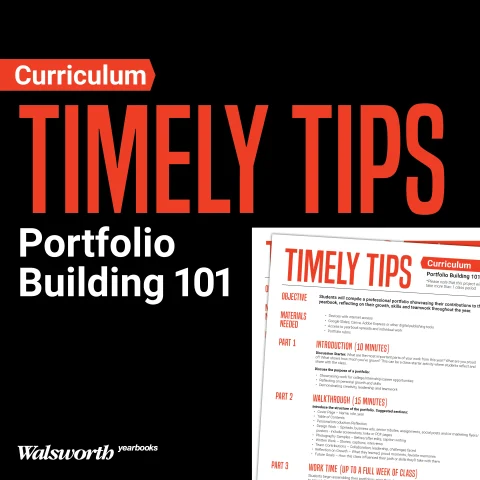“Nostalgia,” he says in the dark room.
On the movie screen is a picture of a family — his family, to be precise. “It’s delicate, but potent…. It’s a twinge in your heart far more powerful than memory alone. This device isn’t a spaceship, it’s a time machine. It goes backwards, and forwards… it takes us to a place where we ache to go again.” There’s a click, and another slide appears, this time of him and his young wife in love. Everyone in the room is rapt with attention. If he didn’t know that he had them then, when his voice breaks a little and the room remains silent, he definitely has them now. A few moments later, the lights come back on and the potential client sits, stunned.
“Good luck with your next meeting,” his boss says with a smirk.
Obviously, this isn’t something that happened in my classroom when one of my staff members gave a presentation. The man in question is Don Draper, the slick main character of Mad Men. The reason I had my staff watch this scene from the show’s first season finale is that I had just spent the better part of a week explaining to them how they will spend the last quarter of the school year. With the last deadline met and yearbooks not set to ship for another two months, it was time to think of next year’s theme. But we were not going to simply brainstorm it as a class; each of them was to develop a theme and sell it to the rest of us.
About 18 months ago, I switched schools and, therefore, inherited a different yearbook staff. The previous adviser had only worked for one frustrating year and when I sat down with the students, I began to see why. After introducing myself, I asked for theme ideas and got a combination of dead silence, blank stares and suggestions like, “We should put glitter on the cover!” The result was a yearbook that was barely off the ground by Christmas, a gray cover with a security camera on it, and an enormous amount of work done by me, while the editors hid in the school library to play computer games and flirt with boys.
So I created the theme project to consume most of April. Each underclassman on the staff would develop a complete theme and present it for evaluation to the entire yearbook class. Those evaluations would be used by next year’s editorial staff to pick the theme for the next book. The project had four phases: learning what a theme is, learning how to present, the presentations, and fine-tuning the chosen idea.
Phase 1: Theme defined
“It’s not just the title,” I probably said 20 times when defining a theme, “and it’s probably already been done.”
I laid out the required items for each presentation:
- A PowerPoint and a leave-behind
- A theme package, with ideas for the title, cover, endsheets and section dividers
- A ladder, and ideas for correcting coverage problems, such as a lack of clubs or a missing sports team
I explained that it is possible to take a cliché and spin it into gold. One day in class, I wrote “CLICHÉ” in huge letters and the titles of 30-40 books that screamed, “Cheesy Yearbook!” But instead of making fun of the seemingly infinite number of yearbook titles that started with “Memories” and ended with the school mascot, I talked about how to make it new. I figured if “Clash of the Titans” can be made to look like “Star Wars”, we could put a new spin on a hackneyed phrase like Embracing the Opportunities (which was my senior yearbook).
Phase 2: Learn to present
Presentation skills are quite possibly one of the most underrated and under taught skills in high school. I’ve actually had students stand in front of a slideshow and tell the class, “Well, you can read it on the screen,” and actually wait — in complete silence — while the class read one information-packed slide.
I didn’t expect my kids to be Don Draper, and, considering his salacious behavior, I’m glad they’re not. But they had to convince me with their presentations that they had the perfect idea. If they didn’t care about it, then why should I? I showed them my PowerPoint about how to do a PowerPoint, and discussed how to speak well to an audience.
Phase 3: Go time
On the presentation days, each student was given an evaluation packet. They were to summarize each presentation, write about what they liked, what needed improvement, and rate it on a scale of 1-5. Then, each student listed their top three presentations.
I collected the evaluations and met with the editors, and it was up to them to decide the theme. It’s not entirely democratic, but I have found that the democratic process does not lend itself to a critical eye. I am not sure that in the creative sector of the working world, the most popular option is always what’s chosen, especially since it might not be the best. And since I have tried to instill in my staff an attention to quality, being able to pick apart each idea is a skill they will need beyond their time with me. I do ask the staff to rank their favorites, and usually they are the best ideas, but it’s not always the case that the most popular presentation is the one that winds up on the cover.
Phase 4: Fine tuning
Because some of the best ideas don’t come overnight, we’re still not done. The person who created the theme then joins the editorial staff to discuss it further. Then it’s off to yearbook camp.
At my last school, our “Fast Forward” theme started as “Livin’ in the Fast Forward” and the cover looked like a Walkman. Once my editors and I got our heads out of the 1980s, we shortened the title and crafted the book around life and the world moving very fast, although the section titles retained the electronics reference: “rewind,” “pause,” “power,” “play,” “volume,” and a last page titled, “stop.”
I’ve only had one instance when an editor had one perfect idea right off the bat. But that was in a year in which she and the entire editorial staff were seniors who had been on staff for three years and the chemistry was well established.
What I love about this theme project is that it gets everyone involved and thinking and helps students develop skills that go far beyond yearbook.




